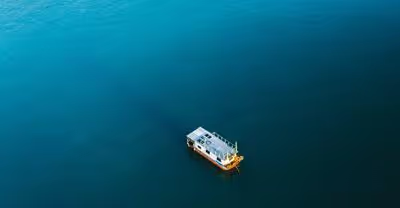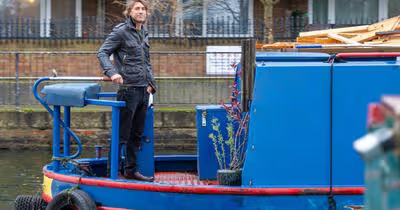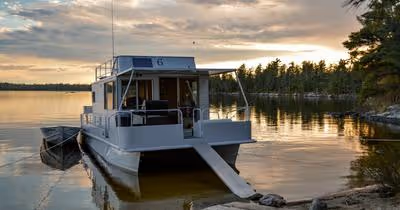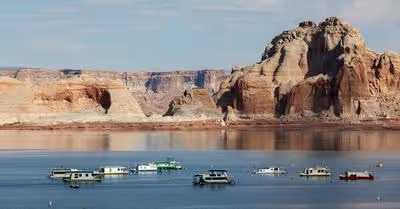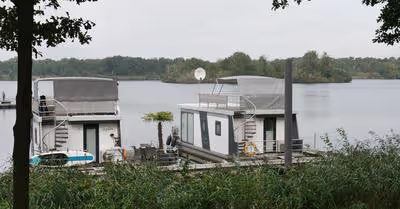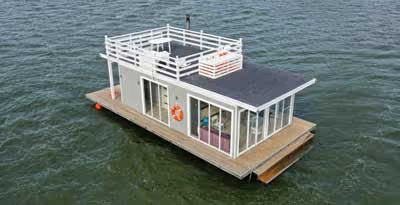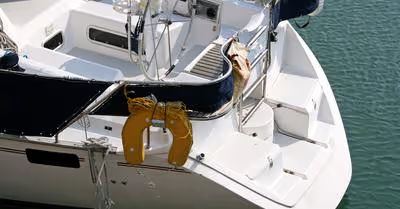
Key Takeaways
- The aft of a ship is the rearmost part of a ship.
- Stern, bow, port, and starboard are the four sides of a ship.
- Aft comes from an old word meaning "behind."
- Remember that port has the same number of letters as left.
- Knowing terms and the difference between port and starboard is vital for cruisers.
Discover the meaning of aft on a boat, its origins, and its role, plus some other cruise ship terms. Set sail with us to become a pro and impress your friends!
Aft, a nautical term referring to the rear section of a boat, hails from the Old English word "aeftan," meaning "behind" or "to the rear." This versatile word can be used both as a noun to describe the back part of ships and as an adverb to indicate moving in that direction.
As mariners with years of experience out on the water, we've acquired a wealth of nautical knowledge. We're here to share our expertise on all things cruise-related, including the fascinating intricacies of maritime terminology like aft.
Parts of a Cruise Ship: Aft Cabin and More
Picture yourself on a cruise ship, the sun shimmering on the water, waves gently rocking the vessel.
As you stand on the deck, you'll notice that cruise ships, like many things in life, have two ends.
The pointy bit up front, cutting through the waves like a hot knife through butter is called the bow. But what about the other end? The one that leaves a trail of frothy white water in its wake?
That is the aft.
Learning the lingo now will keep you safe.
You don’t want to wait until a real situation arises before you decide to learn what is aft on a boat.
It’s not always just cabins and staterooms on cruises; sometimes, passengers need to know the decks, two sides, and other boating directions.
Why Is the Back Called the Aft?
The term aft comes from an Old English word, "aeftan," which means "behind."
And that's exactly where the aft of a ship is located - at the back of the ship. In fact, "aft" is both a noun and an adverb.
As a noun, it refers to the rear section of the ship, while as an adverb, it means "toward the rear."
So, if a crew member ever tells you to go "aft," they're basically saying, "Walk to the back, sailor!"
Or if they tell you your room is located aft, you know that means the back of the ship.
What Is the Opposite of Aft on Cruise Ships?
The opposite of aft of a ship is the bow, which refers to the front end of the vessel, where it cuts through the water to optimize more movement.
We get this term from old words that are related to the concept of bending or curving.
This connection reflects the curved shape of the front end of a ship and many cruise ships, which are designed to navigate efficiently through the water.
What Are the Four Sides of a Boat Called?
The four sides are known as the bow, stern, port, and starboard.
- Bow: The front is the ship’s bow, designed to be as hydrodynamic as possible.
- Stern: The back end, opposite the bow, often leaving the ship’s wake in the water.
- Port: The left side of a ship when facing forward. This term is used for navigational purposes and orientation.
- Starboard: The right side of a ship when facing forward, also used for navigational purposes and orientation.
Whether you're a weekend boater or a seasoned mariner, mastering these four terms is your passport to clear communication and safer sailing.
Picture the scene: you're about to dock, and you hear, "Watch out on the left side!"
What's that? The left? In the heat of the moment, confusion sets in, and alas, a bump, scrape, or worse might ensue.
But if you hear, "Watch out on the port side!" there's no doubt, regardless of where you happen to be facing, you smoothly avoid a costly or dangerous encounter.
How to Remember Port and Starboard
An age-old question of remembering port and starboard.
There is a simple, fun trick to keep these terms straight in your mind.
The word "port" has four letters, just like the word "left."
When you're trying to recall which side is which, remember: port means left hand side, and by elimination, starboard refers to the right.
With this handy trick up your sleeve, you'll never mix up port and starboard again.
Why is Starboard Green and Port Red?
The color coding of starboard (green) and port (red) lights has a long history originating in the 19th century.
The purpose of assigning different colors to each side of the ship is to help sailors identify the orientation of other boats when navigating at night or during other times of low visibility.
The choice of green for starboard and red for port side helps to prevent confusion and collisions.
When two boats approach each other, each crew can quickly determine the direction in which the other ship is headed based on the visible lights.
If a cruise ship captain sees a red light out on the ocean, they know the other vessels are on their starboard side and vice versa.
But why these specific colors? Does it matter?
Red and green were chosen because they are easily distinguishable from each other and from other colors, even at a distance.
Additionally, red has been traditionally associated with danger or caution, signaling to the approaching vessels to yield or give way.
Green, on the other hand, indicates a safer passage on the starboard side.
Having universal terms means that it’s easy to deal with any departure port or docking situation across the world without hitting language barriers.
What Side Do You Pass a Ship On?
In general, when encountering another ship, the rule is to pass on the port side, meaning each ship should steer to its own right.
This is commonly known as the port-to-port passing rule.
Even the most massive Celebrity Edge cruise ship must follow these standards.
What Is the Bathroom on a Ship Called?
On a ship, the bathroom is commonly referred to as the head.
This nautical term dates back to the days of sailing ships when the bathroom facilities were located at the front of the vessel, near the bow.
Why Put the Bathroom at the Ship’s Bow?
The positioning allowed the wind to carry away any unpleasant odors, helping to maintain a more comfortable environment for the crew.
Other Important Boating Terms
In addition to the above, there are a few other important terms that every ship enthusiast should familiarize themselves with:
- Hull: The main body of the ship that floats on the water.
- Keel: The structural backbone of the ship, running along the centerline from bow to stern at the bottom of the hull.
- Rudder: A flat, vertical surface attached to the stern, used to steer by changing its direction when turned.
- Mast: A tall, vertical pole that serves as the support point to the sails and rigging.
- Boom: A horizontal spar extending from the mast to which the bottom of a sail is attached.
- Cleat: A fitting on the deck of modern ships, usually T or Y-shaped, used to secure ropes or lines for stability.
- Fenders: Cushions placed between boats or between a ship and a dock to prevent damage during mooring.
- Jib: A triangular sail set forward of the mast, used for better maneuverability and sail balance.
- Mainsail: The primary and largest sail on a ship, typically attached to the mast and boom.
- Bilge: The lowest part of the interior hull, where water often collects and is then pumped out.
- Knot: A unit of speed used in the maritime industry and aviation contexts equal to one nautical mile per hour (1.15 statute miles per hour).
- Berth: A designated space in a marina or harbor where vessels can be moored or a bed for sleeping on the seas.
- Galley: The kitchen area on board.
No one article can explain what each term from a ship means, but we hope this overview has provided an introduction to the language of the sea in an easy way to get you prepared for your next cruise vacation.




